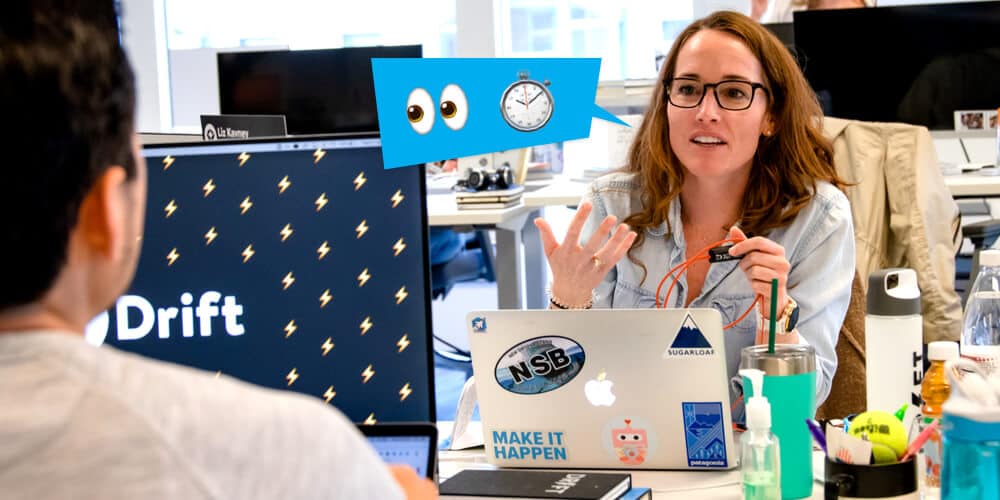
Visitor retention is a bit of a rising topic, and for good reason.
But why?
In this article, we’ll cover all of that. Plus, we’ll go over 7 really simple rules for better visitor retention.
Sound good?
Awesome.
What Is Visitor Retention Exactly?
Simply put, it’s about retaining visitors, both in terms of returning visitors, and increasing the duration of a visit on your website.
Why Visitor Retention Is Important
Today visitor acquisition is becoming more difficult than ever.
Competition online isn’t just intense, it’s expansive. There are around 1.5 billion sites online after all.
ROAS (Return On Advertising Spend) aren’t as good as they once were on both Facebook and Google’s advertising platforms. The ROI (Return On Investment) of SEO has become more tenuous.
It’s steadily becoming more profitable to focus on visitor retention.
Growing Importance In Search Engine Optimization.
One of the reasons why people are struggling with SEO strategies today is because they ignore the importance of UX (user experience).
This isn’t new. But the growing importance of user engagement as ranking factors is making the effect more pronounced.
A bad UX makes people leave your site, and people remember bad experiences with sites. This prevents them from returning and can compound a downward trend in rankings.
One study found that a massive 88% of online visitors are less likely to return to a site after a bad experience.
Google’s machine-learning algorithm, called RankBrain, has been confirmed as being the third most important ranking factor.
This means that Google and other search engines are steadily focusing on monitoring the entire customer journey, both on a website and off of it.
They’re becoming more user-focused.
7 Simple Rules For Better Visitor Retention
Number 7: Psychology
Have you noticed that I’m using a reverse ordered list? Could it be because you’re more motivated to continue reading to find the #1 item in this list? Enough said?
Using psychology to your advantage is massively important when it comes to visitor retention, especially for certain desired outcomes.
A good example of this, though an ethically dubious one, are the sites that pose statements as questions in order to create an emotional response and drive up comments and shares.
Yes, it happens. It’s not just clickbait that marketers manufacture.
Number 6: Content Strategy
Are you giving your visitors a good enough reason to come back?
One key thing you can do is create routine, and make visiting your site habitual.
You could curate the best articles in your industry, or the best articles from your site in the last month, etc.
The other side of this is knowing what kind of content to create generally.
Number 5: Formatting
I think that formatting deserves its own spot.
Because of the way that people read online, best-practices for formatting have changed.
You need to strategically place elements such as images, headlines, bold, and italic words in places that naturally break up the flow of skim readers.
This should stop them in their tracks.
Drawing attention to the important surrounding pieces of content.
Oh, and emojis ??? really help break up your content visually.
Number 4: CTAs
Mailing list signups, discount incentives, push notifications.
All of these are forms of CTAs (call to action).
The reason they are so important is because it allows you to add your visitors to a list that can bring them back to the site in future.
Gaining permission to contact your visitors is an absolute must-do essential for any website.

There are plenty of common CTAs used, such as the ones pictured above from my site Pathtorch’s Blog.
However, you want to position your most important CTAs further away from one another and offer a stronger incentive to influence visitors to take your primary desired action.

This is a much stronger CTA Drift is using on a blog post about powerhouse CMOs. It works because it’s self-contained, away from other elements and uses a clear visual hierarchy. This will grab people’s attention, and is easily the main CTA at the bottom of the page.
Number 3: Interactive Elements
Interactive elements is a pretty broad way of saying, enable people on your page to do something.
This can be via toggle-based “show/hide” content, it could be through an embedded video or slide presentation.

Check it out in action here.
There are numerous ways to add interactive elements to your page, and many of them have been proven to increase dwell time on a page.
Number 2: Chatbots
Introducing intelligent chatbots on your site is a vitally important way that you can keep visitors on a page and engaged.

Not only this, but conversational content, especially pieces that integrate chatbots are going to leave people with a great impression of your site.
The added ability to take people’s contact information (with permission of course) makes chatbots one of the best ways to add value to your content.
Number 1: Make your content & products truly valuable.
Have you ever heard that you should be obsessive about your customers?
Well, it’s true.
Putting yourself in the shoes of your target customer matters more than anything.
Empathy-driven marketing and product development is KEY to your success online today.
How are you going to create something great if you’re thinking about it from your own perspective? This is one of the most common mistakes businesses continue to make. Especially since a whopping 81% of people only skim the content they read online.
So you always have to be thinking about how you could make what you’re providing even 1% better for the end-user – and then go do it.
Want more content from Daniel? Watch his Drift Insider class and learn how to improve UX and visitor retention with call-to-action points.

Daniel is the founder of Pathtorch, a website analysis company that works to help brands discover and unlock new opportunities for growth. When he’s not doing analysis you’ll find him managing On-Page Academy, a free 3,000+ member group on Facebook where he helps entrepreneurs and SEOs improve their on-page & technical SEO knowledge.
Editor’s Note: This is a guest post. Interested in contributing content to the Drift blog? Email Molly Sloan at msloan@drift.com.






